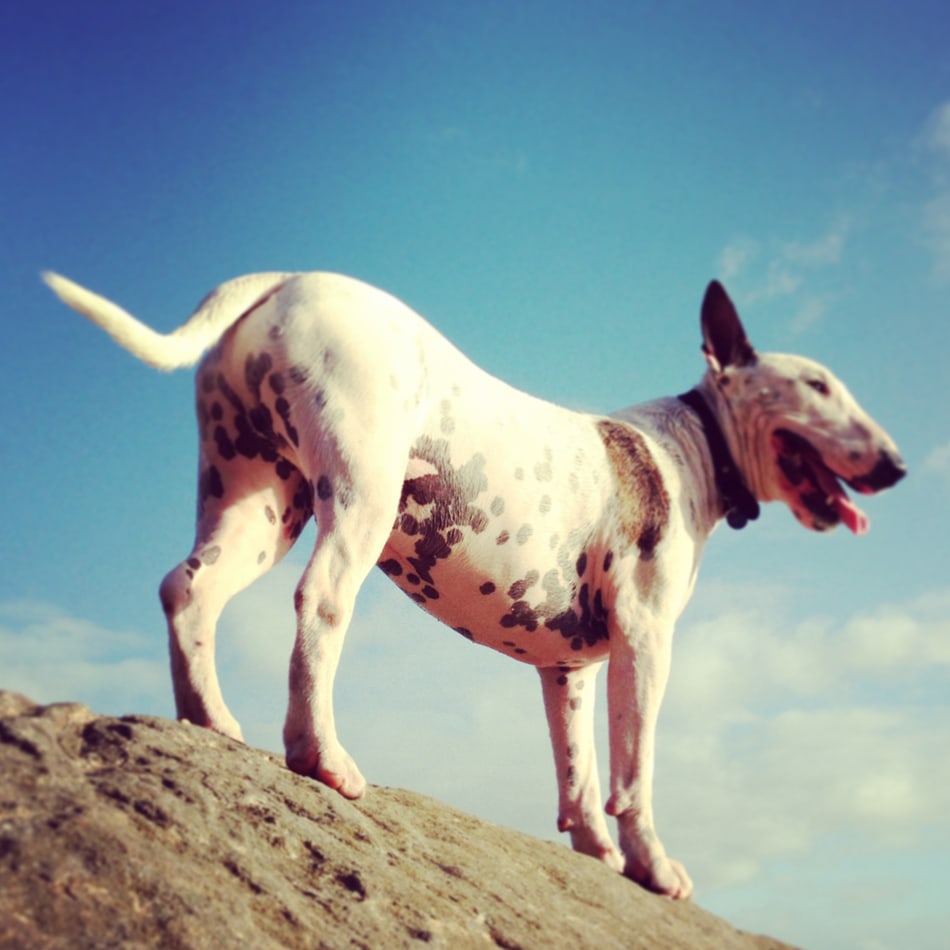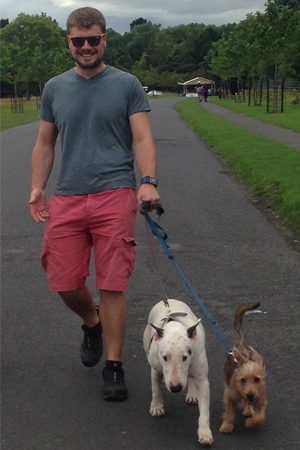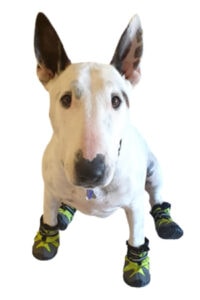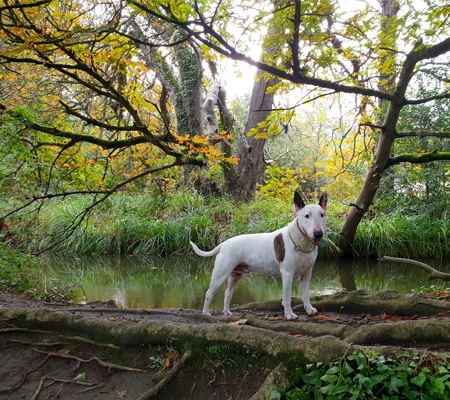
The Hiking season is here and it’s time to get ourselves and our dogs back in shape. For this I have researched and created a checklist to best prepare ourselves for the hiking season, so lets get ready, so we are all set for the hiking trails.
Here is the checklist for you to prepare as you get ready for the hiking trails.
- Start Building Up Your Dogs Endurance
- Practice Your Hiking Commands
- Check and Update All Your Dog’s Vaccinations
- Make Sure Your Dogs Preventative Medications are Up To Date
- Check Your dog’s ID information with Your Vet
- Heal, Sooth and Protect Your Dog’s Paws
- Start Collecting Dog Hiking Gear
- Practice New Dog Hiking Gear With Your Dog
After considerable research I have discovered a few extra things that I hadn’t thought of before, which I have delved into detail below. This includes, how to simply improve fitness and to teach the specific commands that’s critical on the trails.
I have also provided handy lists for vaccinations and parasites to medicate for below, to check in with your vet depending on your region. In addition, I have shared products that we use in conditioning paw health and collecting items for the day of the hike.
Hiking Preparation Guide for You and Your Dog
Start Building Up Your Dog’s Endurance

Start by doing extra dog walks that are more than your usual routine. Do this by going further then you normally go. It’s good if you can record the time spent walking, the distance and the temperature. Try to increase the distance and duration day by day.
Another great method is to go to a large urban park and note the time when you start and see how far you can walk. This will be good because you are in a new environment and you will be close to the car if your dog decides that it’s too much. Better to find out your dogs had enough when you are in the park then on the trail!
Take note of your dog’s energy level and enthusiasm throughout the walk. Once you see your dog getting tired and wanting more breaks, take note, and see if you can beat this the next day. I like recording my distance, time and other information on an app or smart watch which makes it super easy.
If there is a path that is not paved, take it. By walking / running on natural surfaces will improve the muscles around the joints. Once you see an improvement, then your dog’s fitness is becoming better. Don’t forget to mix it up by taking your dog swimming or trying short bike rides to exercise different muscle groups.
Practice Your Hiking Commands
Practicing your commands and keeping up your training is important at all levels of dog training. It not only keeps the commands fresh in you and your dog’s mind, but it also strengthens the bond between you and your dog. Below I have selected the commands that are important for the unfamiliar environment that you find when on the trails.
The main training commands that are vital are your Recalls, Wait and Leave It.
Recalls
I have three recalls that I use on a regular basis. Snoopadoo is trained to coming back when I call his name, Come and a loud whistle that I do. I reserve the whistle for when he is far away or in loud or windy environments.
Practice this in the park with a ball and try to create a distraction by throwing the ball and then recalling your dog, so he has to come to you and not chase the ball.
If this is too advanced, then use a training long lead, let your dog naturally sniff around getting further away from you. When he is at a considerable distance call his name or say come and then immediately tug on the lead once, to indicate he needs to come to your direction without dragging him or pulling him over towards you. Note that the long lead is also perfect for on the trials, I use this on every hike.
Wait
Wait is a word that I use all the time. It’s used when I want the dog to stop and not move. I practice this with distractions all the time. By throwing a ball beside the dog as mentioned above or saying it when there are other dogs around, which is tough to do.
The more you practice the more the dog will listen. I also practice when I’m walking with Snoopadoo and we come to the kerb to cross the road. Here I say wait instead of putting him in a sit.
Leave It
This command is my favorite command, as it stops your dog from doing anything you don’t want it to do, which could be, eating someone’s discarded lunch or eating a dead animal. Many dead animals or discarded food on the ground could carry parasites or disease, so this one command could save your dogs life.
this one command could save your dogs life.
I practice this with many urban distractions like other dogs which I don’t want to meet or neighbourhood cats. When Snoopadoo sees the dog or cat I say Leave it and he is meant to keep walking with me without pulling on the lead, so he is still in control. Admittedly sometimes this works and sometimes it doesn’t, but you need to keep using it.
Also practice this command in the kitchen and say leave it when you accidentally drop food on the floor. He will naturally want to go eat it, but if you say leave it he is not allowed to touch it. Do not give him the food when he has left it. As he will think that leave it means wait and he will receive it if he waits.
Behind
Another command that I use more on the trials with narrow paths or thick forest is behind. When I say the command, Snoopadoo has to walk behind me and not beside. Most of the time this is self-evident to Snoopadoo on the path as it’s the only option to go behind me due to the path narrowing.
However I also use this command when I’m cycling with Snoopadoo and I want him to go behind the bike to either pass something where we both can’t fit. He knows the command and it works perfectly.
Practice this when doing your neighbourhood walk and when you’re coming up to an obstruction, say Behind and walk close to the object and he has no choice but to walk behind you. As soon as you pass the object, give him praise. Always remember that if your dog takes time learning or makes mistakes this is a good thing as it is the perfect opportunity for your dog to learn, so keep practicing.
Check and Update Vaccinations, Medications and Information
We all lead busy lives and it’s easy to let vaccinations, preventative medications, and your dog’s information lapse. This is a must to be followed up before going out in an environment that you are not familiar with.
Check and Update All Your Dog’s Vaccinations
The best way to do this is to call your Vet. They will have on file all your dogs vaccinations that are needed for your area. Check to see if your dog has had the following vaccines:
- Canine Distemper Virus, CDV
- Canine Hepatitis, Adenovirus
- Parvovirus, CPV
- Leptospirosis
- Kennel Cough, Tracheobronchitis
- Rabies
- Lyme Disease, Borrelia Burgdorferi
- Leishmania
- Canine Parainfluenza
- Canine Coronavirus, CCoV
- Canine Influenza
- Bordetella bronchiseptica
I like to also tell the vet that you will be taking your dog with you hiking in the coming weeks and if there is anything that you need to be made aware of. Vets see a lot of issues which can be caused by the local environment. Some of the issues can range from snakes, to bacteria in the river, or evidence of a stronger tick season.
Vets are your best source of information, so it’s worth giving them a call.
If you have to go to the vet to get your dog’s vaccinations, be sure to have the vet do a checkup of your dog and let him know of any ailments that your dog might have and find out how to treat them.
Make Sure Your Dogs Preventative Medications are Up To Date
This is also the time to check your preventative medications that cover:
- Fleas
- Ticks
- Roundworm
- Tapeworms
- Lungworm
- Heartworm
- Ringworm
- and any other parasites.
Check with your local vet if you are unsure and start a preventative medication program that targets them all. There are also flea collars that you can use on the hike which is a good extra prevention. This is great for tick infested areas, long hikes and camping trips.
Check Your dog’s ID information with Your Vet
While talking to your vet, ask them to scan your dog’s microchip implant and make sure the information is up to date with your local vet and relevant authorities. Also check if your Dogs ID tag is updated with your phone number and if it is still readable.
Your dog’s ID tag should have a minimum of your number, a second emergence contact number and your dog’s name. This is so important, as you could lose your dog out on the trail and this will help others find you to reunite you back with your dog. Don’t hit the trails without doing these vital step.
Heal, Sooth and Protect Your Dog’s Paws
This time of preparation be sure to check out your dog’s paws. This is so important knowing that your dog’s paws are in peak condition and that there are no ailments.
Keep your dog’s nails short with regular clipping. If they have become too long, then you need to clip them little by little each session to push back the wick inside the nail. This can take months. So don’t let your dog’s nails get too long. Most people don’t like doing this job and so I recommend taking them to a dog grooming center and let the pro’s handle it.
In addition, condition your dog paws by applying dog safe moisturizing balm and pad protection. Don’t use human moisturizer as this can harm your dog or even become fatal. When washing your dog, clean between their toes and trim the hair on their feet. Afterwards apply a dog safe moisturizer to the paws that have become cracked and dry.
Snoopadoo is using Muttluks Pawmagik which is coconut oil, bee’s wax and shea butter based, to moisturize the paws. Before any hike or if the current environment conditions are severe, like snow or extreme heat, I also use Mushers Secret. This is beeswax based and forms a protective coating. After about a week Mushers Secret would have worn off, when I then re-apply Pawmagik.
Start Collecting Hiking Gear
While your prepping for your hike go dust off your hiking gear and start putting it aside for the day. Also check my vital list below and make sure you have these items.
- Long Lead
- Tick removal tool
- First aid kit
- Pocket knife
- Soft muzzle
- Betadine (this is dog safe)
- Dog water bottle with water bowl
- Dog sun cream
- Towels
- Dog seat belt
- Dog hiking booties shoes
- Dog backpack
This is by no means a complete list but it is the vitals that I keep mostly in one bag ready for the hike.
Practice New Dog Hiking Gear With Your Dog

Before embarking on your hike, allow your dog to get used to the new hiking gear if he hasn’t already. Your dog should get familiar with these new items in your home and on his regular walks. Do this especially for the hiking boots and a harness. Start by introducing the items to him slowly by laying them on his bed. Don’t let him chew on them.
After a while, put the booties or the harness on your dog. Do this around his dinner time and make sure you have the food there to distract him from this new feeling. The food helps him redirect his focus back onto you and not on the new items.
Allow him to walk around or even play ball with this on. Once he is confident with the boots and the harness. It’s time for a local walk. There might be some struggle at first but be sure to redirect his struggling behavior with food or his favorite toy. He should get used to them fairly quickly to the point that he is not focused on them.
So to recap…
I have found this research and this simple checklist to be very beneficial to me and my dog when getting ready for the hiking season. If you follow these steps, you have not only gotten your dog ready for the season, but you have become a responsible dog owner by updating his information, vaccinations, medications and training commands.
Also you are getting ready by picking the right gear and conditioning yourself and your dog for the trails, so you will be best informed on which trials to pick for you and your dog. Follow these simple but very important steps and you and your canine will be all ready to go exploring and have some fun out on the hiking trails.

